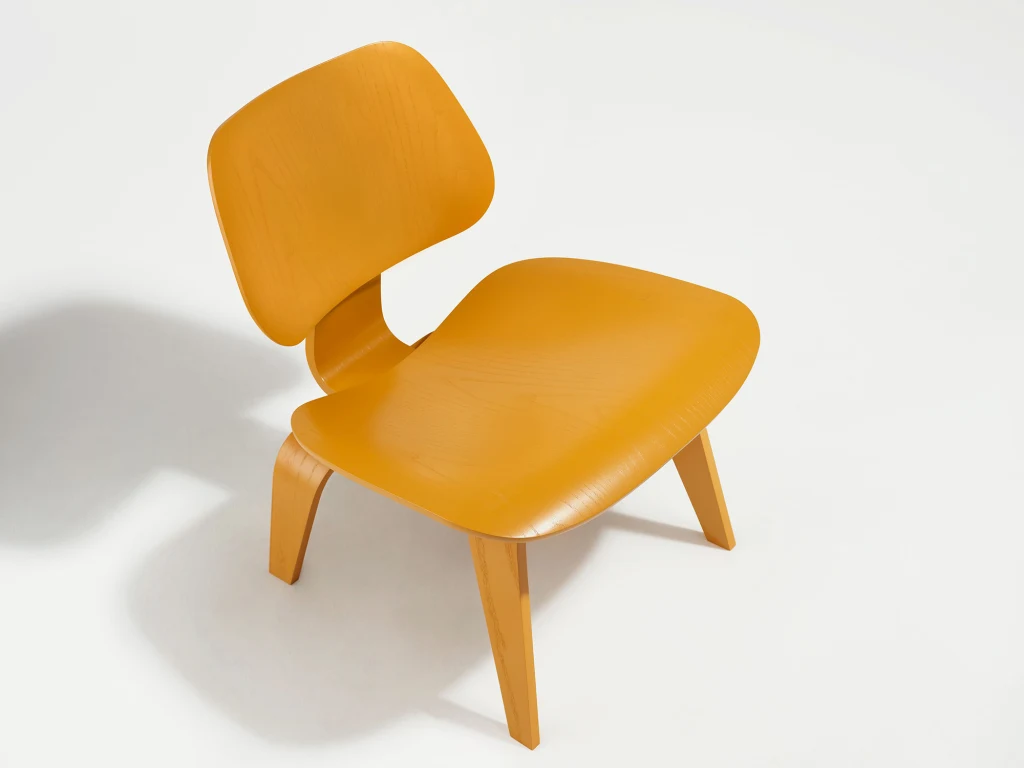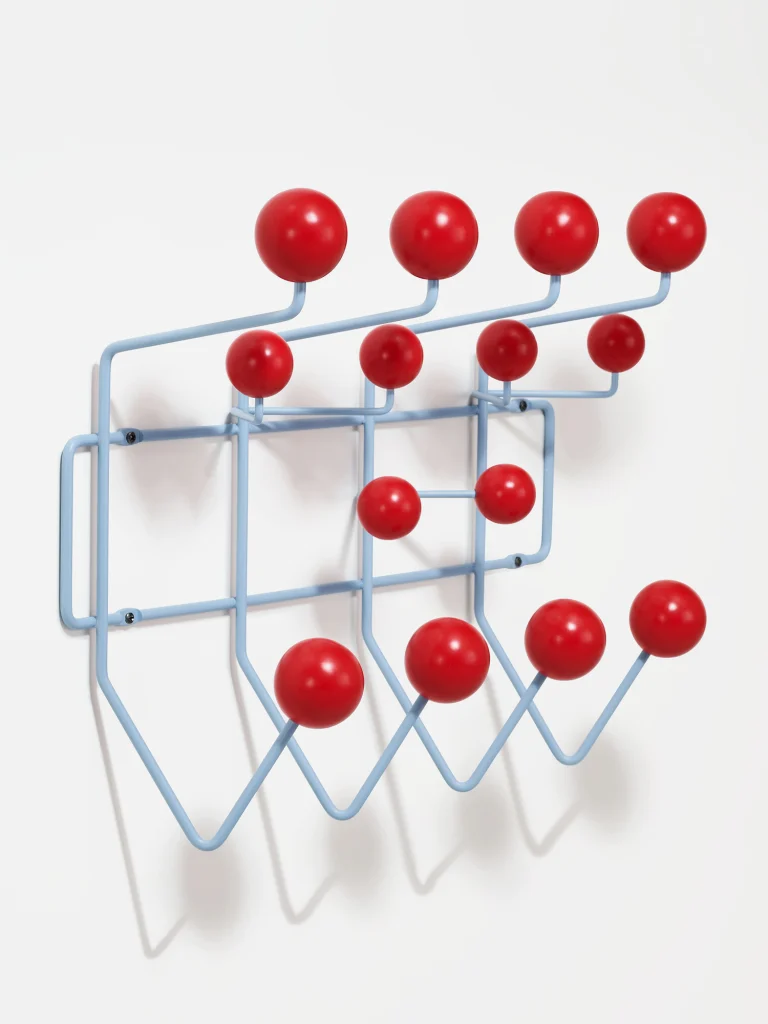When renowned industrial designer Ray Eames sat down to conceptualize a new piece of furniture, often alongside her husband, Charles, she used her background as a painter to imagine all the different color palettes that might work. The duo’s playful, artistic take on the craft is part of what made the most iconic Eames designs so timeless.
But while many of their initial sketches went on to become real products, many more ideas stayed inside their sketchbooks. Today, Herman Miller is hoping to change that. The furniture manufacturer is releasing two beloved Eames designs in new colorways, both inspired by archival findings.
The latest Eames Hang-It-All and Molded Plywood Lounge Chair with Wood Base (LCW) are available online for $295 and $1,195, respectively. A bold yellow ochre makes the updated LCW an eye-catching statement piece, while the Hang-It-All is rendered in a combination of stonewash blue and red that’s taken straight from Ray’s early sketches.
“When we look to reintroduce or expand our classic product offering, we do in-depth research in the Herman Miller Archives,” Alexa Hagen, senior archivist of global archives and brand heritage for Herman Miller’s parent company, wrote in an email to Fast Company. “We have an extensive collection that documents the design and manufacturing process of our heritage products including design drawings, photography, correspondence, etc.”

A vibrant take on a classic
In the case of the LCW, the Herman Miller team, working with the Eames Office and MoMA, began ideating a new yellow colorway after discovering a press release for the Eames’ 1946 MoMA exhibition. At that show, Charles and Ray debuted several pieces of plywood furniture to the public, including the LCW. According to Hagen, the MoMA press release described how “staining the plywood with ‘brilliant hues’ was one of the many significant innovations of the Eames molded plywood technology.”
The chair was innovative on a number of other levels, too. Before and during World War II, Charles and Ray were hard at work on an experimental device (called the Kazam! Machine) that would allow them to mold plywood on two planes without it splintering—a feat never before achieved. After several years and countless iterations, Charles and Ray Eames became the first designers to make it work. Their resulting inventions caused a stir when they were unveiled at MoMA, attracting visitors including George Nelson, Herman Miller’s design director at the time. Soon after, Herman Miller acquired exclusive distribution and manufacturing rights on Eames furniture in North America.
“The LCW achieved icon status almost immediately upon its introduction,” Hagen said. “The innovative use of materials and cutting-edge technology made it a groundbreaking development in seating and an exemplar of what modern design could be.”
Recently, as Herman Miller’s archivists were exploring the chair’s history, they came across an order form from 1947 that indicated a yellow finish as one of the “brilliant hues” available for application on the Eames molded plywood pieces. Today’s yellow ochre re-release marks the first time the vibrant LCW will be available since the chair’s debut.

Bringing an archival sketch to life
While the yellow LCW was briefly available in the late ‘40s, the new Hang-It-All comes in a never-before-seen color combination. When Herman Miller originally released the Hang-It-All in 1953, it came in a burst of colors, including magenta and lemon yellow. It was a collaboration with the toy company Tigrett Enterprises, meant as the ideal storage solution for hanging anything from jackets to backpacks and lunchboxes. The small initial run was cut short when Tigrett Enterprises shut down in 1961. By the ‘90s, though, midcentury modern design had made a major comeback—and lovers of the style were keen to get their hands on all things Eames.
The reintroduction of the Hang-It-All at the turn-of-the-century brought it into the mainstream design zeitgeist, where it’s remained. Herman Miller has reimagined it in toned-down maple and walnut options as well as a rainbow arrangement for Pride. Now, it’s available in a retro blue frame and red accents, which are based on Ray’s original sketches. The drawings, housed by the Eames Office collection, illustrate Ray’s design process as she toyed with the concept of a fully blue model, a red and yellow version, and several other colorful iterations.
“It’s a special experience to encounter a hand-drawn piece like this, especially a rough sketch that is so ephemeral that could easily have been lost to history,” Hagen said. “We’re so lucky the Eameses were so thorough in documenting their work.”
The pair viewed design as primarily about solving a problem or fulfilling a need, rather than “achieving a certain aesthetic,” said Hagen. Their molded plywood invention opened up a new world of possibility for the material, and ideas like the Hang-It-All were first and foremost intended as functional pieces for a busy home. Still, there’s something especially beautiful about simple materials that create something greater than the sum of their parts.
“[Charles and Ray] were able to refine their designs to an essential form by embracing the potential of new materials and technologies of their time,” added Hagen.
Recognize your brand’s excellence by applying to this year’s Brands That Matter Awards before the early-rate deadline, May 3.
